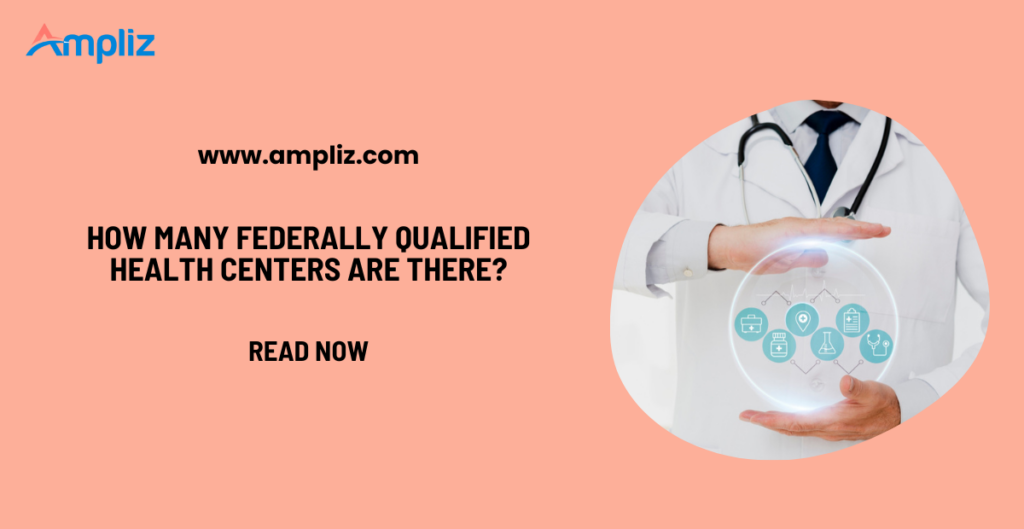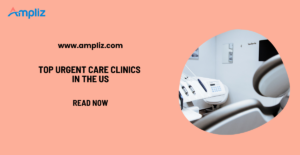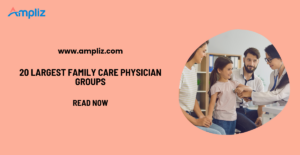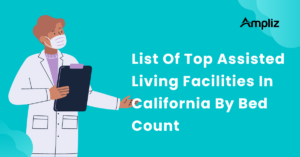The U.S. healthcare landscape is vast and diverse, but one area that remains critical to public health, especially for underserved populations, is Federally Qualified Health Centers (FQHCs). These community-based providers play a key role in offering primary care to individuals regardless of their ability to pay. For healthcare marketers and vendors, FQHCs represent a unique, high-impact audience.
In this blog post, we’ll explore:
- What Federally Qualified Health Centers are
- How many FQHCs operate in the U.S.
- Why marketing to FQHCs is vital
- A list of the top 20 FQHCs in the U.S.
- How to reach them using Ampliz Healthcare Data Intelligence
Let’s begin by understanding the foundational aspects of FQHCs.
What Is a Federally Qualified Health Center (FQHC)?
A Federally Qualified Health Center (FQHC) is a community-based health care provider that receives funds from the HRSA (Health Resources & Services Administration) to deliver primary care services in underserved areas. These centers must meet specific criteria:
- Provide services on a sliding fee scale
- Offer comprehensive services (e.g., medical, dental, mental health)
- Operate under a governing board that includes patient representation
- Serve underserved areas or populations
FQHCs include:
- Community Health Centers (CHCs)
- Migrant Health Centers
- Healthcare for the Homeless programs
- Public Housing Primary Care programs
How Many Federally Qualified Health Centers Are There in the U.S.?
As of 2024, there are approximately 1,400 Federally Qualified Health Center organizations operating more than 15,000 service delivery sites across the United States.
These centers serve more than 30 million patients annually, a majority of whom are low-income, uninsured, or underinsured. With this scale and scope, FQHCs are often the frontline providers for preventive and primary healthcare.
Why Are FQHCs Important for Healthcare Marketing?
FQHCs represent a strategic target for healthcare vendors, device manufacturers, pharma companies, and service providers for several reasons:
1. High Patient Volume
With over 30 million patients served annually, FQHCs represent high-footfall centers ideal for introducing medical technologies, telehealth tools, diagnostics, and patient management systems.
2. Diverse Service Needs
FQHCs require a wide range of products and services — from EHR systems to lab testing kits, from medical equipment to wellness programs — making them versatile partners for healthcare vendors.
3. Government Funding
FQHCs receive consistent federal funding, including special pandemic relief and technology adoption grants, which make them financially capable of adopting new solutions.
4. Decision-Making Units (DMUs)
FQHCs have clear leadership and decision-making bodies, such as CEOs, CMOs, and procurement teams, which makes marketing outreach more structured and targeted.
5. Focus on Innovation
To meet the evolving demands of public health, many FQHCs are actively adopting telehealth platforms, AI-driven diagnostics, and mobile health solutions.
Top 20 Federally Qualified Health Centers in the US
Here’s a curated list of the top 20 FQHCs by size, reach, and service quality, along with how to connect with them using Ampliz Healthcare Data Intelligence:
| FQHC Name | Location | Patients Served | Contact Data |
|---|---|---|---|
| AltaMed Health Services | California | 300,000+ | Access Now |
| Community Healthcare Network | New York | 85,000+ | Access Now |
| La Maestra Community Health Centers | California | 100,000+ | Access Now |
| Erie Family Health Centers | Illinois | 75,000+ | Access Now |
| Asian Health Services | California | 60,000+ | Access Now |
| Fenway Health | Massachusetts | 35,000+ | Access Now |
| Open Door Family Medical Centers | New York | 60,000+ | Access Now |
| Community Health Center, Inc. | Connecticut | 145,000+ | Access Now |
| Boston Health Care for the Homeless | Massachusetts | 11,000+ | Access Now |
| Unity Health Care | Washington D.C. | 100,000+ | Access Now |
| Zufall Health | New Jersey | 42,000+ | Access Now |
| Family Health Centers of San Diego | California | 215,000+ | Access Now |
| Legacy Community Health | Texas | 200,000+ | Access Now |
| Healthpoint | Washington | 105,000+ | Access Now |
| El Rio Health | Arizona | 115,000+ | Access Now |
| NOELA Community Health Center | Louisiana | 25,000+ | Access Now |
| Howard Brown Health | Illinois | 40,000+ | Access Now |
| Asian Pacific Health Care Venture | California | 30,000+ | Access Now |
| Central City Concern | Oregon | 20,000+ | Access Now |
| CrescentCare | Louisiana | 40,000+ | Access Now |
How to Market Your Healthcare Products to FQHCs?
Ampliz Healthcare Data Intelligence enables you to build highly targeted outreach campaigns tailored to FQHCs by providing:
- Verified Contact Lists of decision-makers (CMO, CFO, CIO, Director of Procurement)
- Intent-based marketing data showing which FQHCs are actively seeking products like yours
- Technographic data (EHR platforms used, telehealth adoption, lab systems)
- Behavioral insights for email campaigns and ABM (Account-Based Marketing)
- Geotargeting for regional or state-based healthcare marketing
With Ampliz, your sales and marketing team can:
- Launch hyper-personalized email sequences
- Schedule demos with FQHC stakeholders
- Access procurement and funding cycle data
- Segment lists by service type, specialty, and patient volume
Conclusion
FQHCs are more than just community clinics — they are critical access points for millions of Americans and dynamic hubs for public health innovation. With over 1,400 organizations operating across the U.S., marketing your healthcare product or service to FQHCs can drive significant impact and ROI.
By using tools like Ampliz Healthcare Data Intelligence, you can identify the right decision-makers, tailor your outreach, and




